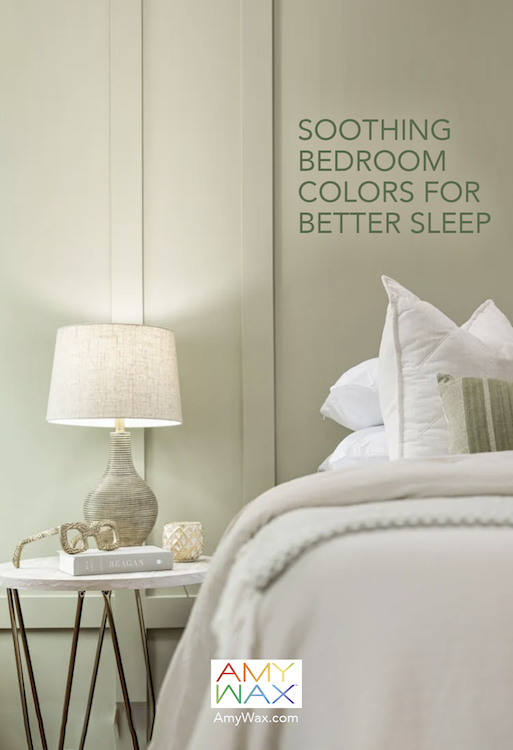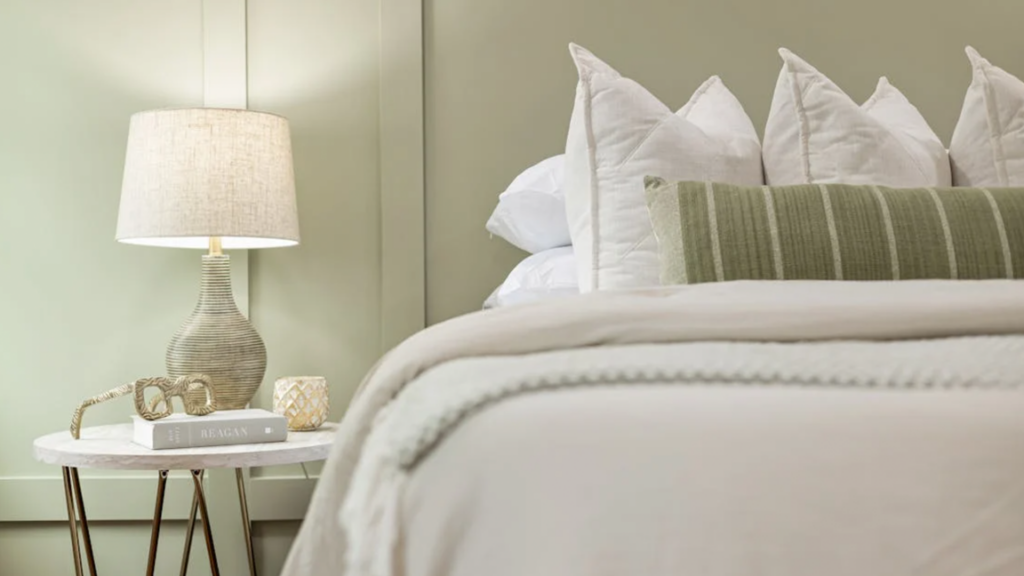
Health and lifestyle are typically at the top of many people’s minds whenever a new year begins. A new year means a fresh start, a chance to break old, unhealthier habits and swap them for new ones. I’d like to think of the new year as an opportunity to treat yourself well and perhaps pamper yourself a bit! With a new approach to how you want to live, I have a great suggestion for this coming year that doesn’t require sweating/crying at the gym or giving up brie cheese: make this new year the one for better sleep or a better night’s rest!!
Color selection impacts the visual nature of how we enjoy spaces and our emotional and even physical responses. As a color expert, I constantly tell my clients and readers that matching color palettes and hues to the emotional intention of the space is just as important as designing the architectural layout. If the colors do not support the intention of the space or clash with it, the room will never be fulfilling or satisfying.
As we start this new year, let’s all resolve to get better sleep! The quality of our sleep affects everything else we do; there’s no denying that fact, but most people don’t get the restful nights their bodies need to perform daily. In this article, I will discuss and suggest which bedroom colors or design elements are better for sleep and how they can be used in your home!
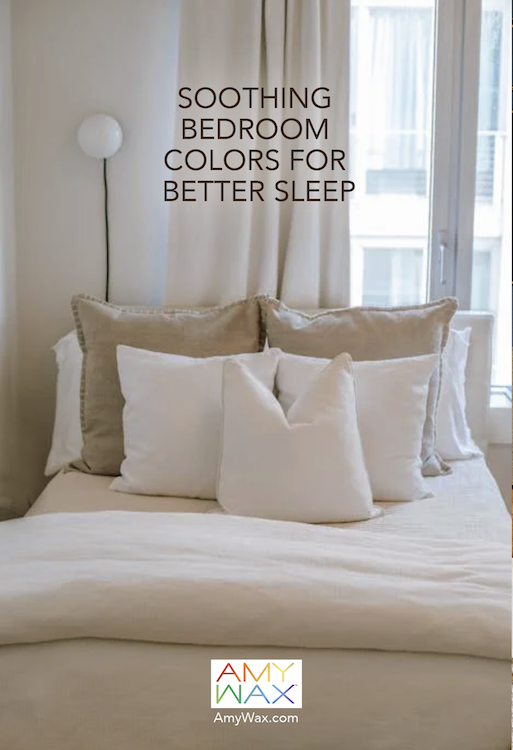
There are soothing and relaxing colors to suit different tastes and preferences. So don’t fret. I won’t suggest that everyone turn their bedroom into a nursery! Whether you are drawn to soft and neutral tones, cool and calming hues, or rich and grounding shades, the right color palette exists for your bedroom needs.
Let’s explore three soothing bedroom color categories that transform your bedrooms into sanctuaries/sleepy retreats!
Warm neutrals, such as soft beiges, creamy ivories, and gentle taupes, are perfect for cultivating a calming atmosphere. These shades evoke comfort and coziness, making your bedroom feel relaxed and understated. When paired with natural textures like linen bedding, woven rugs, or wooden accents, warm neutrals create the perfect sleepy atmosphere that appears effortless and natural.
For example, a wall painted in a creamy caramel beige can be a soothing backdrop, while taupe curtains or a plush ivory throw blanket add depth and tactile appeal. These warm bedroom colors work with almost any design style.
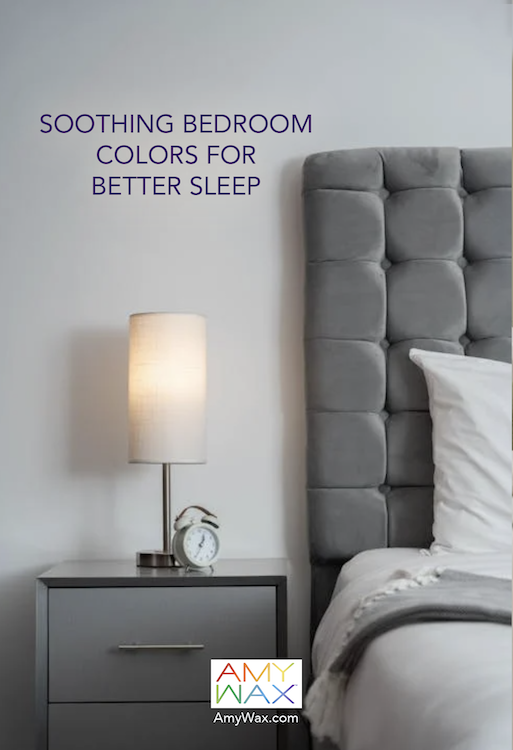
Rooms in shades of a single understated color are renowned for their calming properties. Shades of blues, grays, and purple create a tranquil atmosphere and make it easy to add softer accents if you wish to incorporate a delicate color into your monochromatic palette. The understated quality of this design aesthetic is particularly effective for promoting a peaceful mindset. You could say that whispery soft grays, blues, and delicate greens are the most traditional soothing bedroom colors. They are so effective that I doubt they will ever go out of style!
Picture your bedroom walls in a delicate pale blue or feathery soft gray, echoing hazy skies or gentle dusky twilights. Add deeper hues, like indigo or plum, with throw pillows, bed linens, a headboard, or art to enhance the vibe without overwhelming the space. These quieter shades can naturally reduce stress and lower heart rates, helping you drift into a restful slumber.
For those who prefer heavier, richer palettes, deep woody browns complimented with warm colors like rust, merlot, or plum can create a cocoon-like ambiance. These colors are grounding, offering security while still feeling luxurious and inviting. You could slumber for days in the space without interruption.
Imagine an accent wall behind the headboard in a coffee bean brown or rust shade paired with bedding with golden accents and deep merlot throw pillows. Add a few soft, warm tableside lamps to complete the look. Inspired by unrushed elegance, these earthy hues will envelop you in a warm embrace, and the space will feel like your own private royal palace!
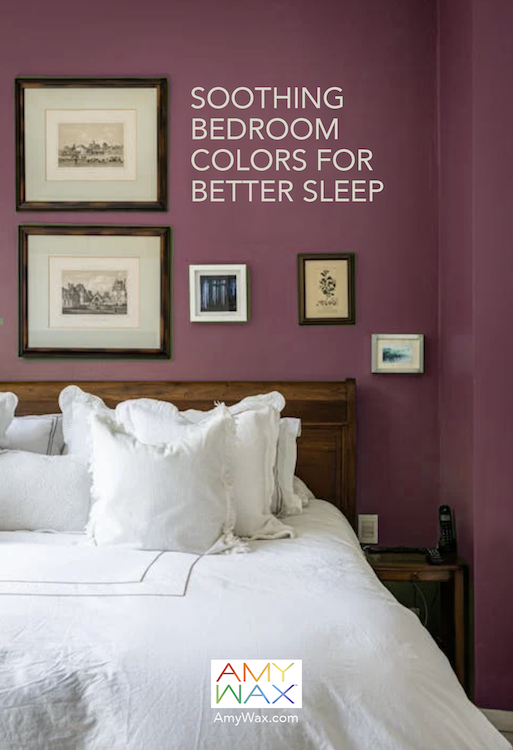
Balancing and contrasting light and dark shades with your color selection is very important to add some dimension to the space, but you don’t want to go overboard and add too much to the point of distraction. Soft and muted tones can be paired with deeper/richer, complementary hues to achieve a dynamic look without distraction or unwanted loudness.
Layering textures with plush rugs, velvet cushions, and knit throw pillows can introduce a tactile element to the space, making it feel more inviting. Lighting is also crucial—opt for warm, adjustable lighting to complement your soothing colors.
I’m a color specialist, not a physician, but It doesn’t take an MD to understand how critical sleep is for our overall health (especially after the holidays!). So, why not invest in yourself by adding soothing bedroom colors for better sleep in your home!? Your body will thank you, and it’s much more enjoyable than any crash diet or gym trial!
